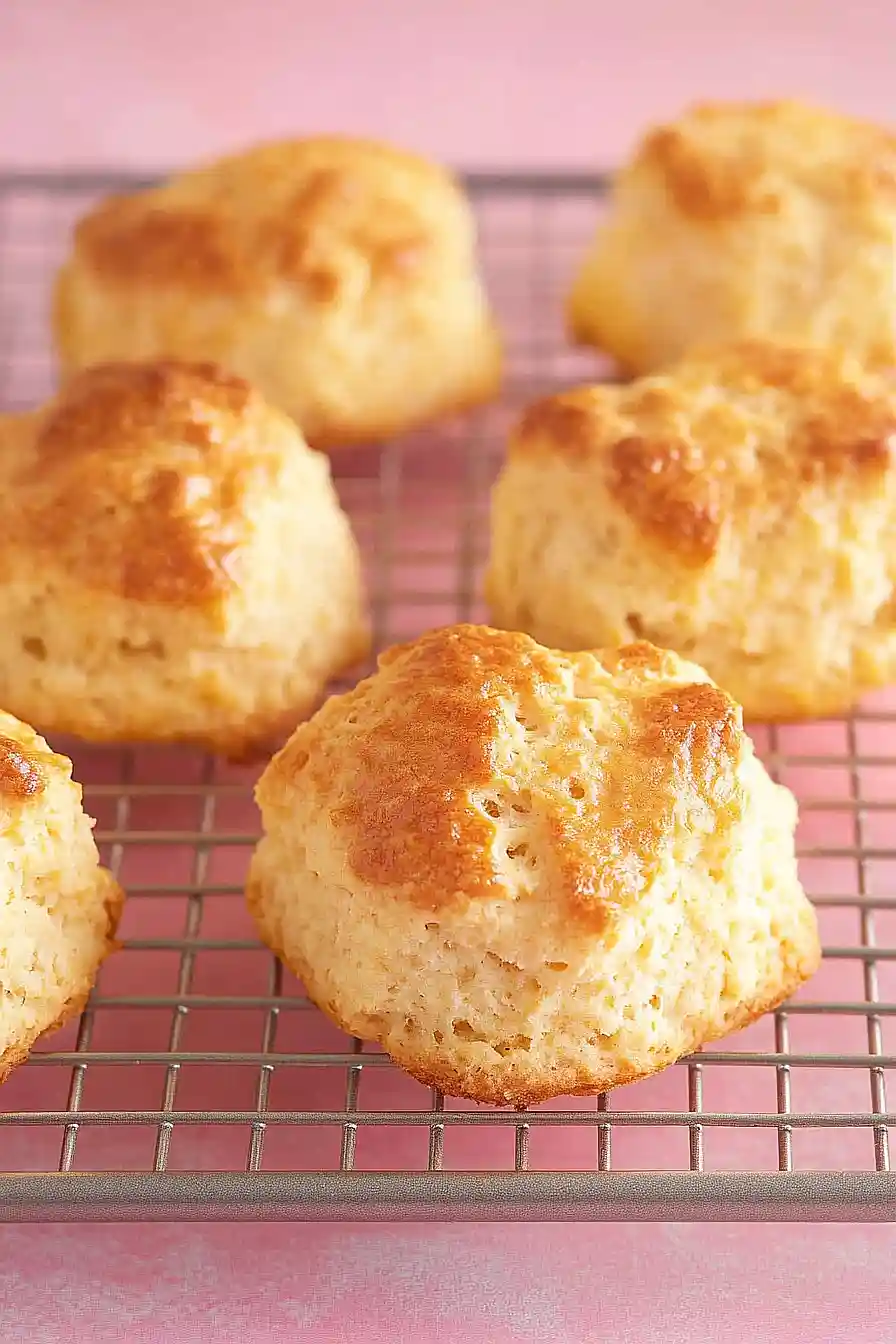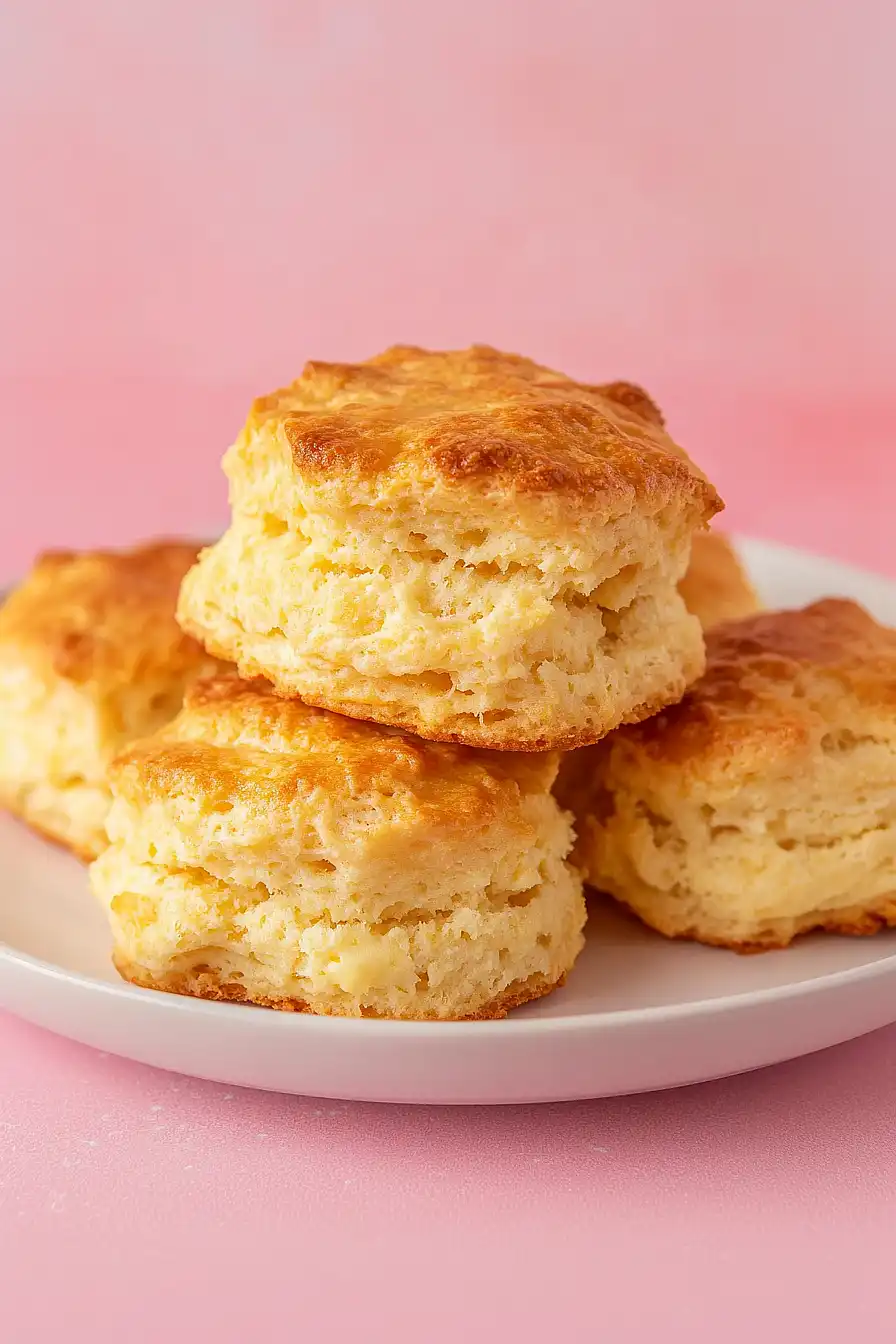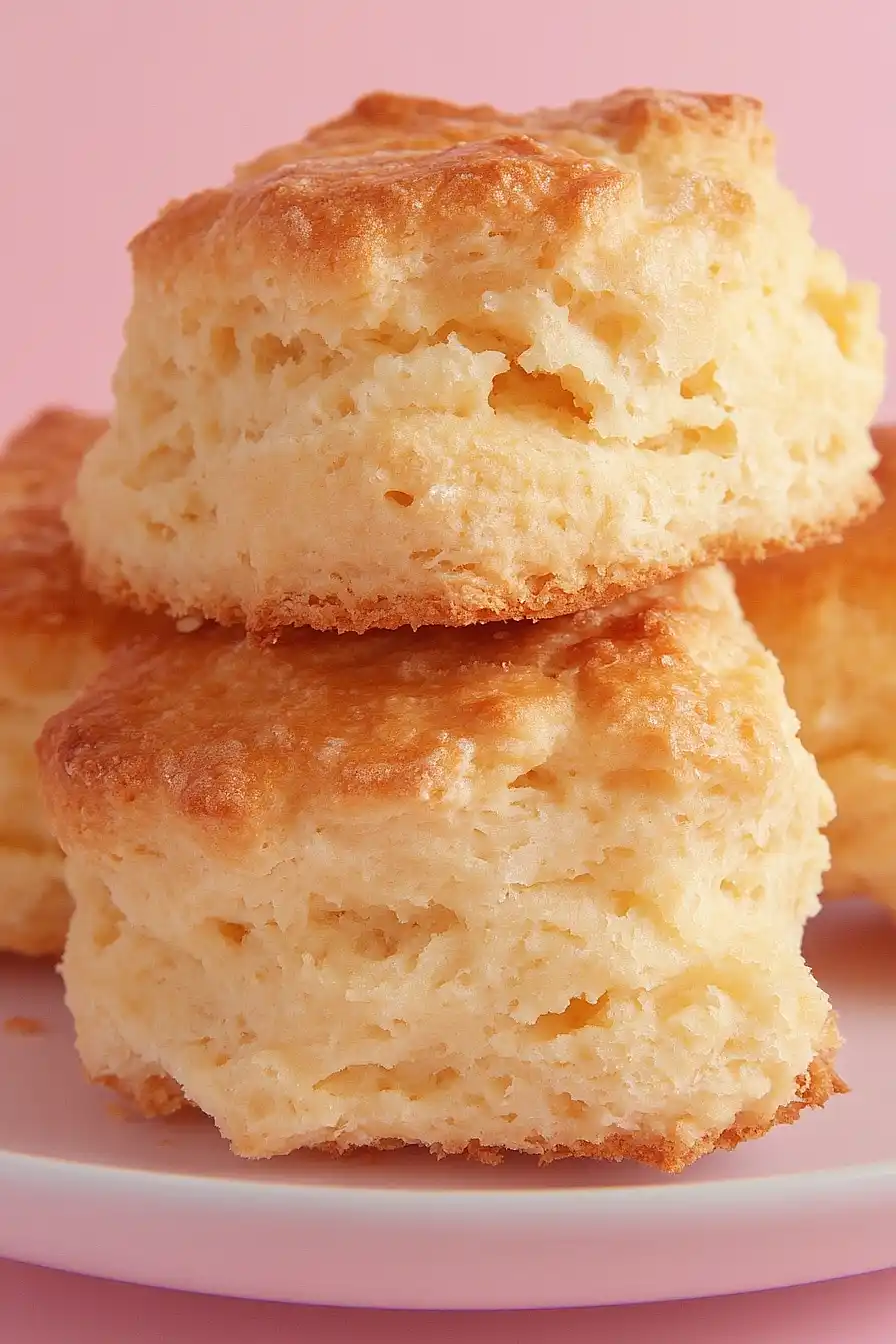Growing up, I always thought scones were fancy pastries that only came from bakeries. My mom never made them at home – she’d buy them for special occasions, and they were usually dry and crumbly. It wasn’t until I started baking that I realized what I’d been missing all those years.
Turns out, homemade buttermilk scones are nothing like those store-bought ones, and they’re surprisingly easy to make. The secret is in the buttermilk – it makes them tender and moist in a way that regular milk just can’t match. Now my kitchen fills with their warm, buttery smell every weekend morning, and my family wouldn’t have it any other way.
Why You’ll Love These Scones
- Quick breakfast treat – These scones come together in less than an hour, perfect for weekend mornings when you want something fresh from the oven without spending all day baking.
- Basic pantry ingredients – You likely have most of these ingredients already in your kitchen, making it easy to whip up a batch whenever the craving strikes.
- Perfectly flaky texture – The combination of cold butter and buttermilk creates layers of tender, flaky goodness that’s crispy on the outside and soft on the inside.
- Customizable recipe – This classic buttermilk base works great on its own, but you can easily add fruits, chocolate chips, or nuts to make it your own.
What Kind of Buttermilk Should I Use?
Real, full-fat cultured buttermilk is your best bet for making tender, flaky scones. While you might be tempted to make a substitute with regular milk and lemon juice, authentic buttermilk contains cultures that react better with the baking powder and help create that perfect scone texture. Look for whole buttermilk rather than low-fat versions – the higher fat content helps create more tender results. If you can’t find fresh buttermilk, powdered buttermilk can work in a pinch, but make sure to follow the package directions carefully for reconstituting it and keep the liquid cold until you’re ready to use it.
Options for Substitutions
Don’t worry if you’re missing some ingredients – here are some handy swaps that work well in these scones:
- Buttermilk: No buttermilk? Make your own by adding 1 tablespoon of lemon juice or white vinegar to regular milk and letting it sit for 5 minutes. You can also use plain yogurt thinned with a bit of milk to reach the right consistency.
- Plain flour: While plain flour is best for scones, you can use self-raising flour – just reduce the baking powder to 1 teaspoon since self-raising flour already contains leavening agents.
- Caster sugar: Regular granulated sugar works perfectly fine here. If using coarser sugar, you might want to blend it briefly to make it finer.
- Unsalted butter: Salted butter can work – just reduce the added salt to 1/4 teaspoon. The butter must be cold though, this isn’t negotiable for flaky scones!
- Egg wash: For the top brush, you can use milk, cream, or additional buttermilk instead of beaten egg. Each will give a slightly different finish, with egg giving the most shine.
Watch Out for These Mistakes While Baking
The temperature of your ingredients makes a huge difference in scone success – using warm butter or buttermilk will result in flat, dense scones instead of light, flaky ones, so keep everything chilled until the moment you need it. Working the dough too much is another common mistake that leads to tough scones – mix just until the ingredients come together, and don’t worry if you see a few streaks of flour or small lumps of butter. When cutting your scones, avoid twisting the cutter as this seals the edges and prevents them from rising properly – instead, press straight down and lift straight up in one clean motion. For the best rise and texture, place your scones in the freezer for 15 minutes before baking, and make sure your oven is fully preheated to ensure even baking and that perfect golden-brown top.
What to Serve With Scones?
These buttery scones are perfect for creating a cozy afternoon tea spread at home! The classic way to serve them is still the best – split them while they’re slightly warm and top them with clotted cream (or whipped cream) and your favorite jam. For a morning treat, try serving them with good salted butter and honey or maple syrup. If you’re hosting a brunch, set up a little scone bar with different spreads like lemon curd, berry preserves, and cream cheese, then let everyone mix and match their toppings. Don’t forget to brew a pot of hot tea or coffee to complete the experience!
Storage Instructions
Keep Fresh: These buttermilk scones are best enjoyed the day they’re baked, but if you have leftovers, store them in an airtight container at room temperature for up to 2 days. They might lose a bit of their initial crispness, but they’ll still taste great with your morning coffee or afternoon tea.
Freeze: Scones are perfect for freezing! You can freeze them either baked or unbaked. For baked scones, let them cool completely, then pop them in a freezer bag for up to 3 months. For unbaked scones, freeze them on a baking sheet until solid, then transfer to a freezer bag – you can bake them straight from frozen, just add a few extra minutes to the baking time.
Refresh: To bring back that fresh-baked taste, warm your scones in a 350°F oven for about 5-8 minutes. If they’re frozen, let them thaw overnight in the fridge first. A quick zap in the microwave works too, but the texture won’t be quite as nice as using the oven.
| Preparation Time | 20-30 minutes |
| Cooking Time | 15-16 minutes |
| Total Time | 35-46 minutes |
| Level of Difficulty | Easy |
Estimated Nutrition
Estimated nutrition for the whole recipe (without optional ingredients):
- Calories: 2800-3000
- Protein: 40-50 g
- Fat: 150-160 g
- Carbohydrates: 350-370 g
Ingredients
- 480 grams plain or all-purpose flour (about 3 1/3 cups + 1 tablespoon)
- 20 grams baking powder (4 teaspoons)
- 80 grams caster or granulated sugar (roughly 1/3 cup + 1 tablespoon)
- 1/2 teaspoon salt
- 130 grams unsalted butter, diced and chilled (around 1/2 cup + 1 tablespoon)
- 1 cold large egg
- 300 ml full-fat buttermilk, well-chilled (about 1 1/4 cups)
- 1 large egg, beaten, or a few tablespoons of extra buttermilk for brushing
Step 1: Prepare the Baking Tray and Dry Ingredients
Line a large baking tray with baking or parchment paper.
In a large mixing bowl, combine flour, baking powder, sugar, and salt.
Give the mixture a quick stir to evenly distribute the ingredients.
Step 2: Incorporate the Butter
Add cold butter to the dry ingredients.
Using your fingers or a pastry cutter, work the butter into the flour mixture.
Flatten the cubes of butter with your fingertips and continue until the mixture resembles coarse crumbs, with no large lumps of butter remaining.
Step 3: Prepare the Wet Ingredients
In a separate bowl, add the egg and buttermilk.
Whisk them together with a fork for about 20 seconds until well combined.
Step 4: Form the Dough
Pour the buttermilk mixture into the dry ingredients.
Gently stir with a fork until the mixture becomes shaggy.
Turn the mixture out onto a clean work surface and use your hands to bring it together into a round disc.
Divide the disc into four equal parts.
Step 5: Shape and Cut the Scones
Stack the quarters of scone dough on top of each other.
Using the palm of your hand, gently press the dough down to a thickness of at least 3 cm (1 inch).
Use a round 6 cm (2.5 inch) cookie cutter to cut out 8-9 scones.
Avoid twisting the cutter.
Gather leftover dough, press together once, and cut out an extra scone or two if possible.
Step 6: Chill, Brush, and Bake
Place the scones on the prepared baking tray, ensuring they are not touching.
Chill the scones in the refrigerator for at least 30 minutes.
Preheat your oven to 220°C (430°F) standard / 200°C (390°F) fan-forced.
Before baking, brush the tops of the scones with beaten egg or leftover buttermilk.
Bake the scones for 15-16 minutes, or until they turn golden brown.
Let the scones cool completely before serving.


